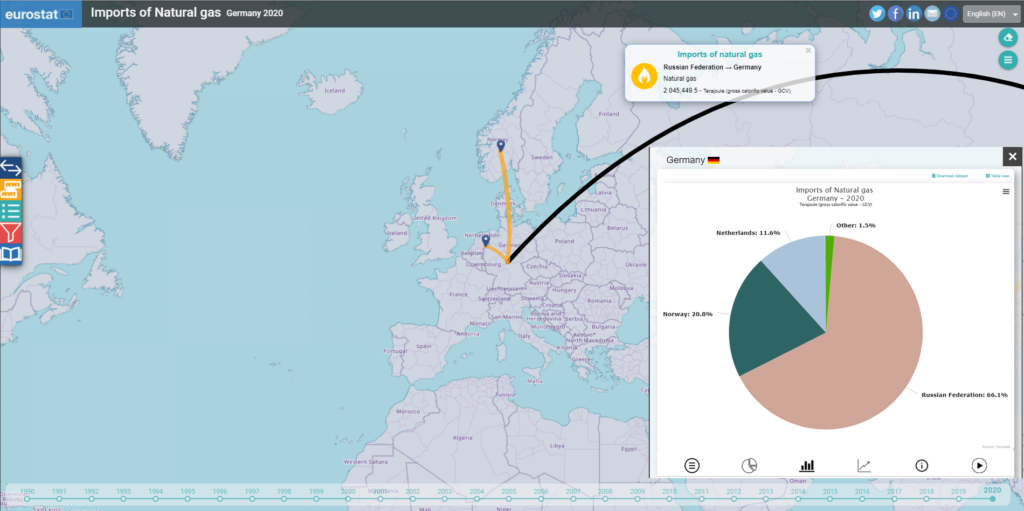From where do we import energy?
What do we import?
For its own consumption, the EU also needs energy that is imported from third countries. In 2020, the main imported energy product was petroleum products (including crude oil, which is the main component), accounting for almost two thirds of energy imports into the EU, followed by natural gas (27 %) and solid fossil fuels (5 %).
Russia is the main EU supplier of crude oil, natural gas and solid fossil fuels
In 2020, almost three quarters of the extra-EU crude oil imports came from Russia (29 %), the United States (9 %), Norway (8 %), Saudi Arabia and the United Kingdom (both 7 %) as well as Kazakhstan and Nigeria (both 6 %). A similar analysis shows that over three quarters of the EU’s imports of natural gas came from Russia (43 %), Norway (21 %), Algeria (8 %) and Qatar (5 %), while more than half of solid fossil fuel (mostly coal) imports originated from Russia (54 %), followed by the United States (16 %) and Australia (14 %).
Different patterns among the EU Member States
In 2020, more than 80 % of energy imports were petroleum products in Cyprus, Malta, Greece and Sweden and more than a third was natural gas in Hungary, Austria and Italy. Nearly 15 % of energy imports were solid fuels in Slovakia, Poland and Czechia.
To discover the main trading partners of your country and see the different trade flows, please open the full-screen data visualisation tool ‘Energy trade‘. The screenshot below gives you an idea of the information you can find when playing around with the tool.

How dependent are we on energy produced outside the EU?
The dependency rate shows the extent to which an economy relies upon imports in order to meet its energy needs. It is measured by the share of net imports (imports – exports) in gross inland energy consumption (meaning the sum of energy produced and net imports). In the EU in 2020, the dependency rate was equal to 58 %, which means that more than half of the EU’s energy needs were met by net imports. This rate is lower compared with 2019 (60 %), which is partly linked to the COVID-19 economic crisis, however it is still slightly higher compared with 2000 (56 %). Across the Member States, the import dependency rate ranges from over 90 % in Malta, Cyprus and Luxembourg to 10 % in Estonia.
In 2020, the EU mainly depended on Russia for imports of crude oil, natural gas and solid fossil fuels, followed by Norway for crude oil and natural gas.